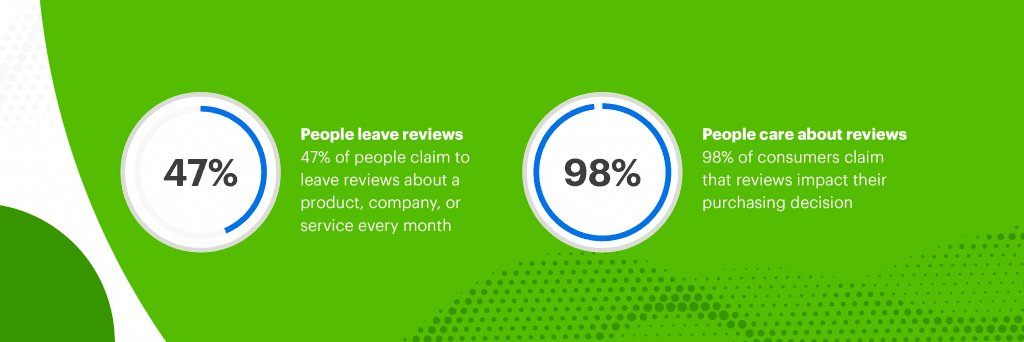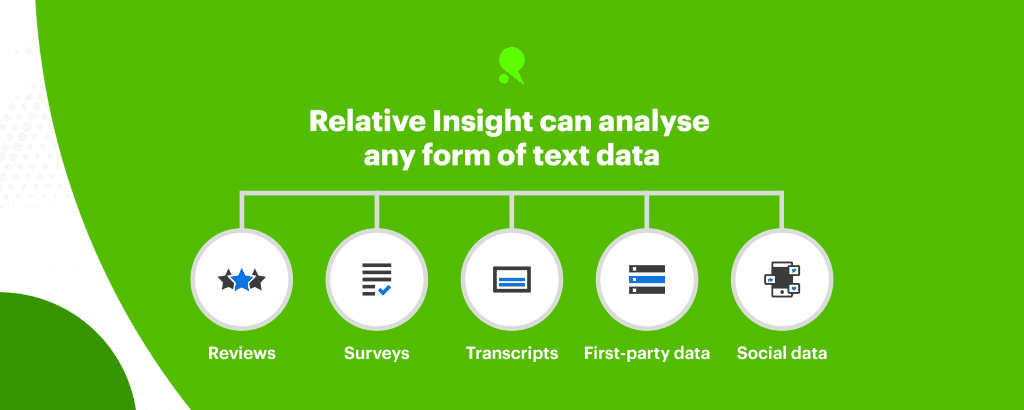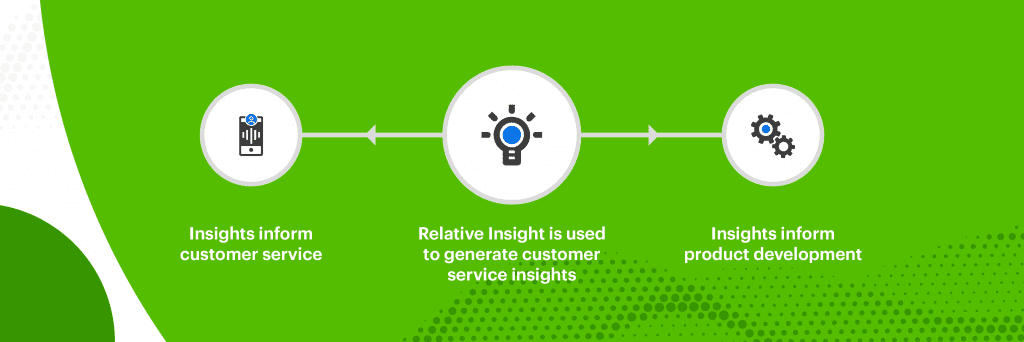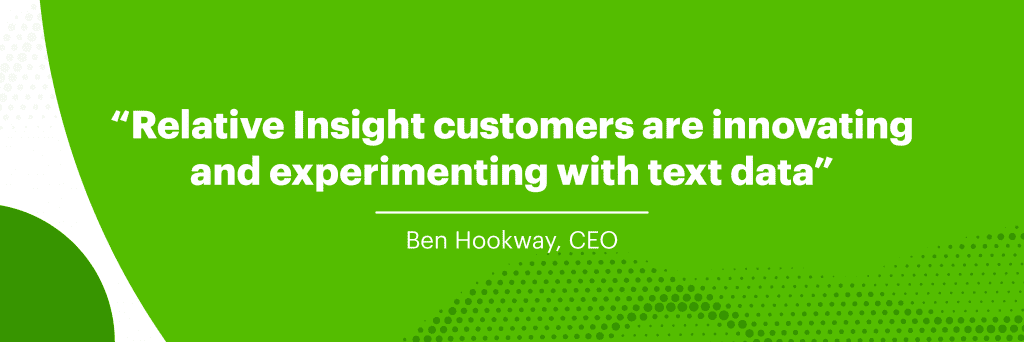Business intelligence and text analytics trends for 2023

Our mission at Relative Insight is to help customers see text data as a strategic business asset and discover value from often overlooked data sources. With our unique comparative approach, we provide a solution to the challenges of managing and analyzing unstructured data at scale and help researchers and insight teams realize that text data is the future of business intelligence.
Numbers, charts and graphs help leaders understand what is happening within their organizations but often fail to capture the drivers of their successes and shortcomings. Customer feedback, social discourse, forum discussions and other sources of text data provide a contextual layer that supports robust, holistic understandings of a company’s performance.
As an increasing number of businesses invest in their text analytics capabilities, we’ve observed some common business intelligence and text analytics trends in our own customer base as to why this is happening.
A wider variety of data sources for understanding core consumers
Consistently, customers are seeking out better and more robust ways to analyze a wide variety of text-based data sources and understand their core consumers.
As such, surveys and transcripts are becoming an increasingly bigger part of the business analytics picture. Businesses are recognizing the importance of analyzing conversation data captured in contact centers, interviews and focus groups, and the strategic influence that qualitative data can have on brand strategy, product development, customer care, marketing, communications and more.
Online reviews and social media conversations provide organizations with real-time data sources that can help them understand how their customers feel. However, with almost half of global internet users claiming to leave reviews and 1.145 trillion MB of data being generated every day, businesses are presented with an overflow of information that is difficult to manage, process and evaluate at scale.

Many of the existing analytics tools designed to solve this challenge are simply inadequate. They surface obvious or unactionable discoveries based on keyword frequency or produce static reports that fail to help people stay on top of trends. Therefore, companies require innovative solutions like Relative Insight to efficiently surface actionable and continual insights from their data.
What makes these business and text analytics trends even harder to ignore is that they’re not just isolated to one industry or sector. From consumer goods to retail, insurance and higher education, we’re seeing these trends take hold across the board – proving how crucial it is for companies to dig into open data sources to remain competitive.
Multiple applications of text analytics
Customers often come to us with a specific data source or business problem in mind. However, as our clients mature in their capabilities, their horizons expand. What we are seeing is that upon implementing Relative Insight, customers quickly understand how the platform can be used for other data sources, business questions and functional areas – a key business intelligence and text analytics trend that will continue to accelerate in 2023.

For example, organizations often use Relative Insight to generate customer service insights from contact center transcripts. However, in the process, they realize the transcripts also contain a host of insights that can be leveraged to inform product development.
In this case, a single data source can generate continual insights to support different functions and in doing so help the organization increase the value they are getting from their data. Rather than the data being siloed and analyzed for a single purpose, businesses can release the full potential of customer-driven insights and easily collaborate with other departments using a single platform.

In other instances, customers realize the applicability of a particular approach to other business areas. For example, the approach used to generate competitor intelligence may also prove useful for generating local market insights for global companies.
The significance of first-party data in a privacy centric world
Access to third-party data is becoming more and more restricted, with consumers being empowered to make their own decisions about data privacy. As privacy regulations become more stringent and third-party cookie deprecation comes into effect, companies will need to do more primary research to develop and maintain robust understandings of their audiences.
There’s no doubt that the volume of first-party data is rising. We’ve seen an increasing number of customers using Relative Insight to analyze their first-party data. However, the business value that first-party data can provide is also gaining attention. When companies are thinking about who their customers are and how their behavior is changing, first-party data is invaluable.
It’s important that businesses are tactical and intentional about how they seek out and collect first-party data. Open-ended survey questions should be carefully crafted to answer specific business questions or problems. By gathering data that is full of relevant customer insight, and using innovative solutions to analyze this data, organizations will benefit from primary research and be able to reach the same levels of business intelligence as before.
The strategic importance of text analytics
The challenges of analyzing text data and the mounting realization of its strategic importance are driving growth in the text analytics market. The business intelligence and text analytics trends we are witnessing in our own customer base prove that there is relevance and need for innovative solutions like Relative Insight.
Knowing how to find unique insights and make the most of your text data has never been more important. As the adoption rate for text analytics continues to increase across sectors and organizations of all sizes, the future looks bright for the industry.
Ben Hookway
CEO, Relative Insight

